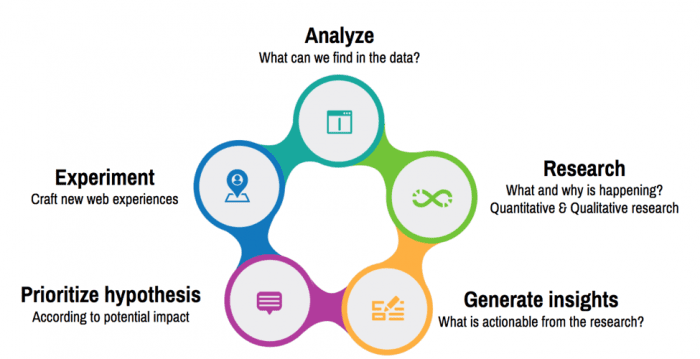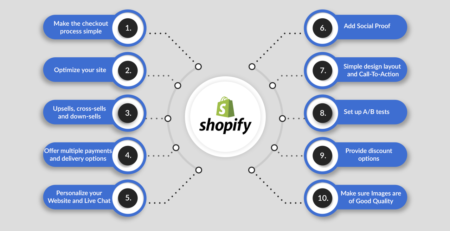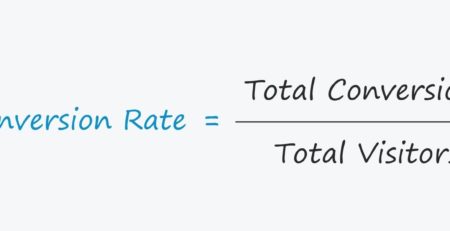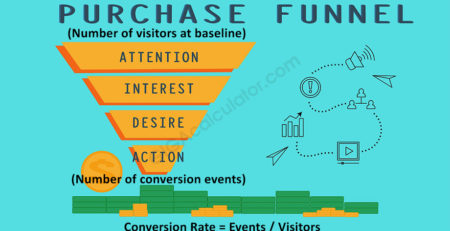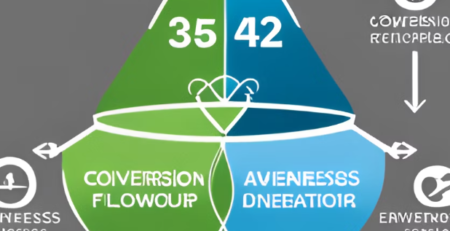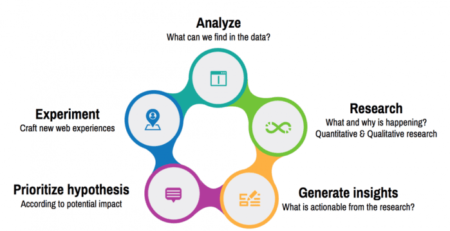Where To Start On Conversion Rate Optimization?
So, you’ve heard about Conversion Rate Optimization and you’re wondering, “Where to start?” Well, you’ve come to the right place! In this guide, we’ll take you through the basics of Conversion Rate Optimization (CRO) and show you how to get started on improving your website’s conversion rates.
But first, let’s talk about what Conversion Rate Optimization actually is. Simply put, it’s the process of increasing the percentage of website visitors who take a desired action, such as making a purchase, filling out a form, or subscribing to a newsletter. And who doesn’t want more people to take action on their website, right?
Now, you might be thinking, “Why is CRO so important?” Well, here’s the thing: increasing your conversion rates means getting more value out of the traffic you already have. Instead of spending more money on advertising or SEO to drive more traffic, you can optimize your website to convert more of the existing traffic into customers or leads. It’s a cost-effective way to grow your business!
So, whether you’re a business owner, a marketer, or simply curious about improving website performance, this guide will give you the foundation you need to start optimizing your conversion rates. Let’s dive in and unlock the secrets of CRO together, shall we?
(Short reminder: The introduction should consist of three paragraphs, each containing no more than four lines.)
1. Analyze your current conversion rates to identify areas for improvement.
2. Set clear goals and objectives for your optimization efforts.
3. Conduct user research to understand your target audience’s needs and preferences.
4. Optimize your website’s design and user experience to enhance conversion opportunities.
5. Implement A/B testing to evaluate different strategies and determine what works best.
By following these steps, you’ll be well on your way to improving your conversion rates and driving business growth.
Where to Start on Conversion Rate Optimization?
Conversion Rate Optimization (CRO) is a crucial aspect of any online business looking to improve its performance and drive better results. But where do you begin when it comes to optimizing your conversion rates? In this article, we will explore seven key areas to focus on when starting your CRO efforts. From understanding your target audience to conducting thorough research and testing, these steps will set you on the path to success.
1) Identify Your Target Audience
The first step in optimizing your conversion rates is understanding your target audience. Who are you selling to? What are their needs, desires, and pain points? By defining your target audience and creating buyer personas, you can tailor your conversion strategies to match their preferences and motivations. Use tools like Google Analytics to gather data and insights about your website visitors, and conduct surveys or interviews to get a deeper understanding of their preferences.
Once you have a clear understanding of your target audience, you can create personalized and targeted experiences that resonate with them. This could involve creating highly relevant landing pages, crafting personalized email campaigns, or customizing product recommendations based on their previous interactions. By catering to your audience’s unique needs and preferences, you can significantly increase your conversion rates.
Remember, your target audience may evolve over time, so it’s essential to regularly revisit and update your buyer personas to ensure your strategies remain relevant.
2) Analyze Your Website Data
To optimize your conversion rates, you need to have a solid understanding of how users are currently interacting with your website. Utilize web analytics tools like Google Analytics or Hotjar to gather data on user behavior, such as the pages they visit, the buttons they click, and the actions they take on your site. This data will provide valuable insights into areas where users may be dropping off or encountering obstacles in their journey towards conversion.
Identify key metrics such as bounce rate, time on page, and exit rate to pinpoint areas of improvement. For example, if you notice a high bounce rate on a particular landing page, it might indicate that the page’s content or design needs optimization. By diving into the data, you can uncover valuable opportunities to make data-driven improvements to your website and increase your conversion rates.
Incorporate tools like heatmaps and session recordings to gain a visual understanding of how users navigate your site. This can help identify areas where users are getting stuck or experiencing confusion. By optimizing these areas and providing a seamless user experience, you can increase the likelihood of conversions.
3) Conduct A/B Testing
A/B testing, also known as split testing, is a powerful technique for optimizing your conversion rates. It involves comparing two versions of a web page or element to determine which one performs better in terms of driving conversions. By presenting different variations of your website to different segments of your audience, you can gather empirical data on which version leads to higher conversion rates.
When conducting A/B testing, make sure to focus on one variable at a time. This could include elements such as headlines, call-to-action buttons, page layouts, or even color schemes. By testing one variable at a time, you can pinpoint the specific element that has the most significant impact on conversions.
Once you have gathered enough data, analyze the results to determine the winning variation. Implement the changes based on the winning version and continue to iterate and optimize over time. Remember that A/B testing is an ongoing process, and continuous testing is necessary to drive long-term improvement in your conversion rates.
Further Steps to Optimize Conversion Rate
4) Streamline Your Checkout Process
A frustrating or complicated checkout process can be a significant barrier to conversions. Simplify your checkout process by reducing the number of steps, eliminating unnecessary fields, and offering guest checkout options. Clear and concise instructions, progress indicators, and trust signals such as secure payment icons can instill confidence in your customers and encourage them to complete their purchase.
5) Optimize for Mobile Users
With the increasing use of smartphones, optimizing your website for mobile users is essential. Ensure your website is responsive and loads quickly on mobile devices. Use mobile-friendly navigation and design elements, and prioritize a seamless user experience across different screen sizes. By providing a smooth mobile experience, you can capture a significant portion of potential conversions.
6) Leverage Social Proof
Social proof is a powerful psychological phenomenon that can significantly impact your conversion rates. Incorporate customer testimonials, reviews, and case studies to demonstrate the positive experiences of previous customers. Display trust badges and showcase any relevant awards or certifications to instill trust and credibility in your brand. By leveraging social proof, you can overcome skepticism and encourage visitors to take the desired action.
7) Personalize Your Offers
Personalization is key to capturing the attention and interest of your website visitors. Utilize data such as past purchase history, browsing behavior, and demographic information to tailor your offers and recommendations. Display personalized product recommendations, create dynamic landing pages, and craft personalized email campaigns. By delivering tailored experiences, you can enhance engagement and improve conversion rates.
A/B Testing Tips and Best Practices
A/B testing is an essential component of Conversion Rate Optimization. Here are three
1) Develop Clear Hypotheses
Before conducting an A/B test, it’s crucial to develop clear hypotheses about the changes you want to make and the expected impact on conversions. This will help guide your testing process and ensure you are focusing on elements that have the potential to drive significant improvements.
2) Gather Sufficient Sample Size
To obtain accurate and statistically significant results, it’s important to gather a sufficient sample size. Running tests with too small a sample size can lead to inconclusive or misleading results. Use online calculators or statistical tools to determine the required sample size to achieve reliable results.
3) Run Tests for an Appropriate Duration
Avoid prematurely ending A/B tests before they have run for an appropriate duration. Short-duration tests may not accurately reflect user behavior, and you risk making decisions based on incomplete or misleading data. Consult statistical significance calculators to ensure you run tests for an appropriate length of time.
In conclusion, when it comes to Conversion Rate Optimization, there are several key areas to focus on to improve your website’s performance. From understanding your target audience and analyzing website data to conducting A/B tests and optimizing key touchpoints, taking a systematic approach to CRO can help drive significant improvements in your conversion rates. By continuously testing, analyzing, and optimizing, you can create a user-centric website that maximizes conversions and delivers exceptional results for your business.
Key Takeaways: Where to Start on Conversion Rate Optimization?
- 1. Identify your conversion goals.
- 2. Analyze your website’s current performance using tools like Google Analytics.
- 3. Determine your target audience and understand their needs and preferences.
- 4. Optimize your website design and user experience to enhance conversions.
- 5. Conduct A/B testing to experiment with different elements and strategies to improve conversion rates.
Frequently Asked Questions
Looking to improve your website’s conversion rate? Here are some common questions to help you get started on conversion rate optimization.
1. How can I identify areas of improvement in my conversion rate?
Analyze your website analytics to identify pages with high bounce rates or low conversion rates. Look for patterns and determine where visitors are dropping off in the conversion funnel. Additionally, conduct user testing and collect feedback to gain insights into user experience issues. By identifying areas of improvement, you can prioritize your optimization efforts and focus on the most impactful changes.
Furthermore, consider utilizing heatmaps and click tracking tools to understand user behavior on your website. These tools visually display where users are clicking, scrolling, and spending the most time, providing valuable information on areas that need optimization.
2. What are some simple website changes I can make to increase my conversion rate?
Start by optimizing your website’s load time. Slow-loading pages can lead to high bounce rates, negatively impacting conversion rates. Compressing images, minifying code, and enabling browser caching are a few ways to improve load time.
Another effective strategy is to optimize your website’s forms. Minimize the number of required fields, make form fields easy to fill out, and provide clear calls to action. Additionally, incorporate trust elements such as customer testimonials and security badges to build credibility and increase conversions.
3. How can I create compelling and persuasive website copy?
When crafting website copy, it’s crucial to understand your target audience and their pain points. Use language that resonates with them and emphasizes the benefits of your product or service. Highlight how your offering can solve their problems or meet their needs.
Use persuasive techniques like storytelling, social proof, and scarcity to compel users to take action. Craft clear and concise headlines, subheadings, and bullet points to communicate your key selling points effectively. Test different variations of copy and analyze the impact it has on your conversion rate.
4. Should I focus on optimizing my website for desktop or mobile users?
In today’s mobile-centric world, it’s essential to optimize your website for both desktop and mobile users. Mobile optimization is particularly crucial as mobile traffic continues to grow. Ensure your website is responsive and mobile-friendly, providing a seamless user experience across devices.
Pay attention to mobile-specific optimizations such as easy navigation, clear calls to action, and simplified forms. However, don’t neglect desktop users either, as they may still make up a significant portion of your audience. Strive for a consistent and optimized experience across all devices.
5. How long should I run A/B tests to determine the effectiveness of my changes?
The duration of an A/B test depends on various factors, including the amount of traffic your website receives and the magnitude of the changes being tested. While there is no set rule, it’s generally recommended to run tests for at least one to two weeks to ensure statistical significance.
Ensure your tests have a sufficient sample size to draw valid conclusions. Additionally, monitor the test results continuously and check for any unusual fluctuations or patterns. Once you have gathered enough data and reached statistical significance, analyze the results and implement the winning variation on your website.
What is Conversion Rate Optimization? | CRO Basics and Tips for Success
Summary
Getting more people to buy stuff on your website is conversion rate optimization. Here’s what you need to know:
First, make sure your website looks good and is easy to use. People will leave if it’s confusing.
Then, figure out what people are doing on your site and what’s stopping them from buying. Use tools like Google Analytics to get this information.
Next, test out different changes to see what works best. This could be changing colors, adding reviews, or making the buy button bigger.
Finally, keep testing and refining to keep improving your conversion rates. It’s an ongoing process!
Remember, the goal is to make it as easy as possible for people to buy from your website. So start optimizing and watch those sales increase!

